The Perfect Itinerary for a 10 Day Trip to Puerto Rico

Puerto Rico completely blew me away. It’s one of those places that lingers in your mind long after you leave, with food that haunts your dreams and beaches that reset your soul. Ten days wasn’t nearly enough, but it was just enough to fall head over heels.
This guide focuses on the Northern and Eastern regions of the island, including the stunning islands of Vieques and Culebra off the eastern coast. If you’re into quiet beaches, low-stress travel, and a little adventure, you’re in the right place.

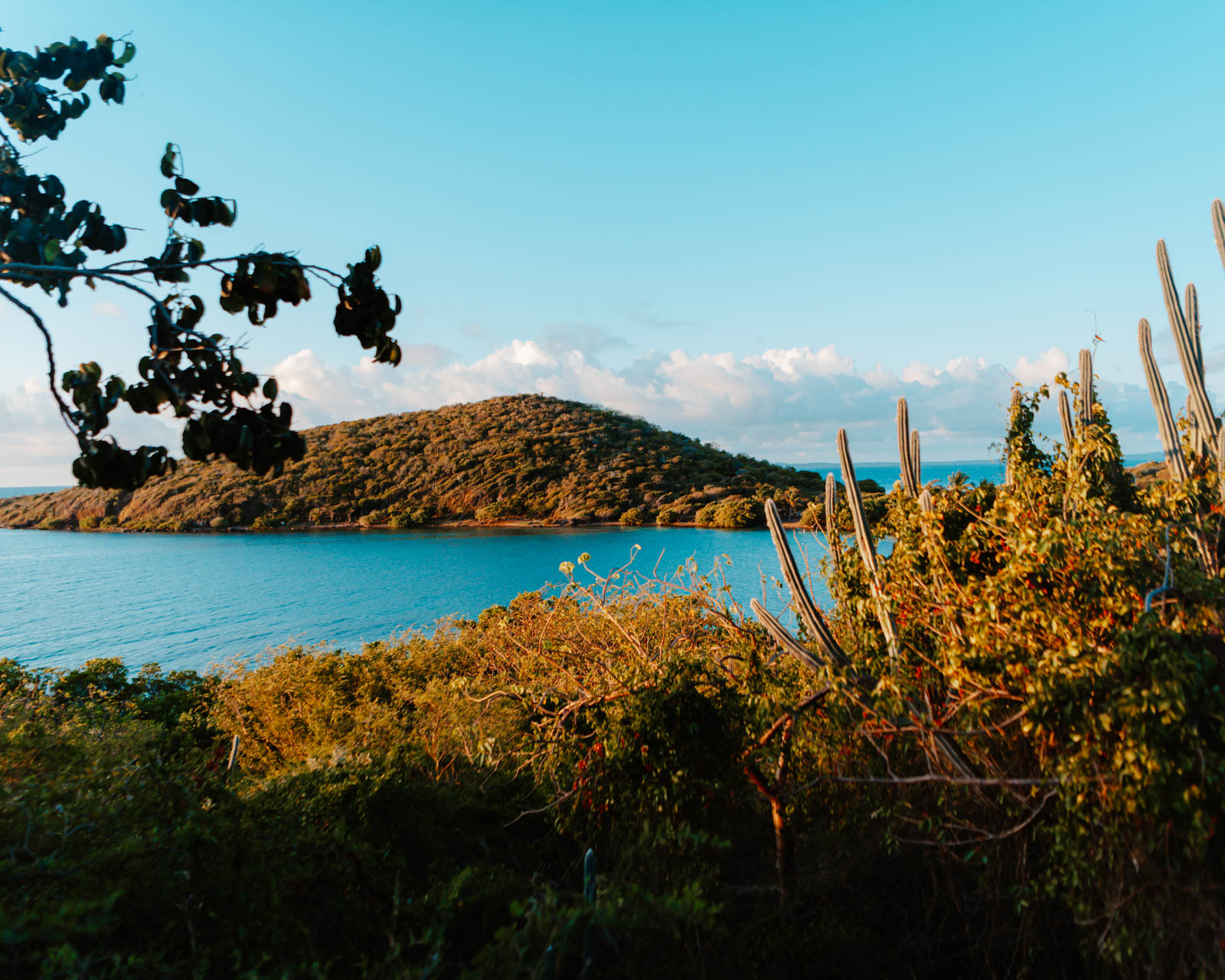
Day 1: Arrival & Flight to Culebra
Culebra is a dreamy, laid-back island just 17 miles off Puerto Rico’s mainland and getting there is part of the adventure. Depending on your arrival time, you’ll either hop on a ferry or catch a small island hopper from Ceiba, a town about an hour from San Juan. If you land late, spend the evening exploring San Juan and head to Ceiba the next morning for your ferry or flight.
We opted for the small plane experience, and it was every bit as thrilling as we’d hoped! We flew with AirFlamenco from José Aponte Hernández Airport on a 7-seater plane that felt like something out of a travel film.
Cost: $49 per passenger. The ticket included one checked bag and one small bag with a total weight limit of 30 pounds.
Since we brought six bags, we paid an extra $30 each for an additional 30 pounds, bringing our total to $158. We had one large suitcase, two standard carry on bags, two backpacks and 1 bag for my freediving fins.
Upon arriving at Culebra’s quaint airport, we rented a golf cart from Carlos Jeep Rental which is hands down the best way to explore the island. Unless you’re with a big group or moving a ton of luggage, a full-sized car isn’t necessary.
If you’re overloaded, grab a taxi to your hotel first, then swing back for the golf cart. The island is so compact that nothing is more than a 10–20 minute drive away.
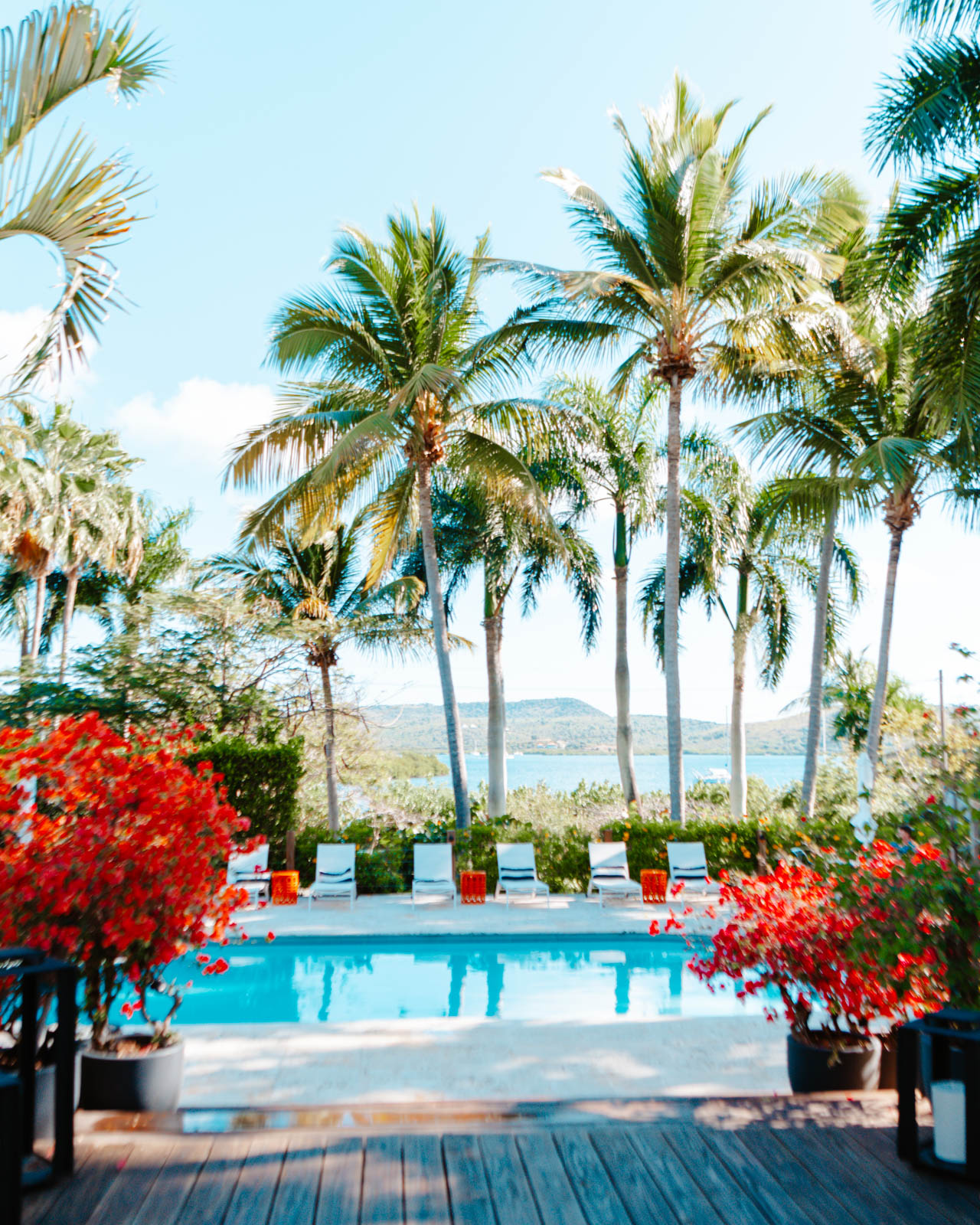
Where to stay in Culebra
We stayed at Club Seaborne, a charming boutique hotel tucked away on the south side of the island and one of the few with a pool. Like most places on Culebra, it’s not exactly luxury, but that’s kind of the point. The island leans rustic, not resort, and the simplicity is part of what makes it feel so unfiltered and special.
Our stay was quiet and easy. We started our mornings with a solid breakfast in the dining hall, and in the evenings, we’d wind down with light dinners and a night swim. It wasn’t fancy, but it fit the pace of the island perfectly.
Where to eat in Culebra
Similarly to accommodations, Culebra has only a handful of restaurants. We enjoyed lunch at La Cocina Del Navegante three out of the four days we were on the Island. My top picks from the menu:
- Coconut shrimp
- Spicy crab
- Red snapper fillet with rice and beans
- Surf and turf with rice and amarillos
You can also eat at Flamenco beach, there are several food vendors there. Additional restaurants in town are Zacos Tacos and Dinghy Dock.
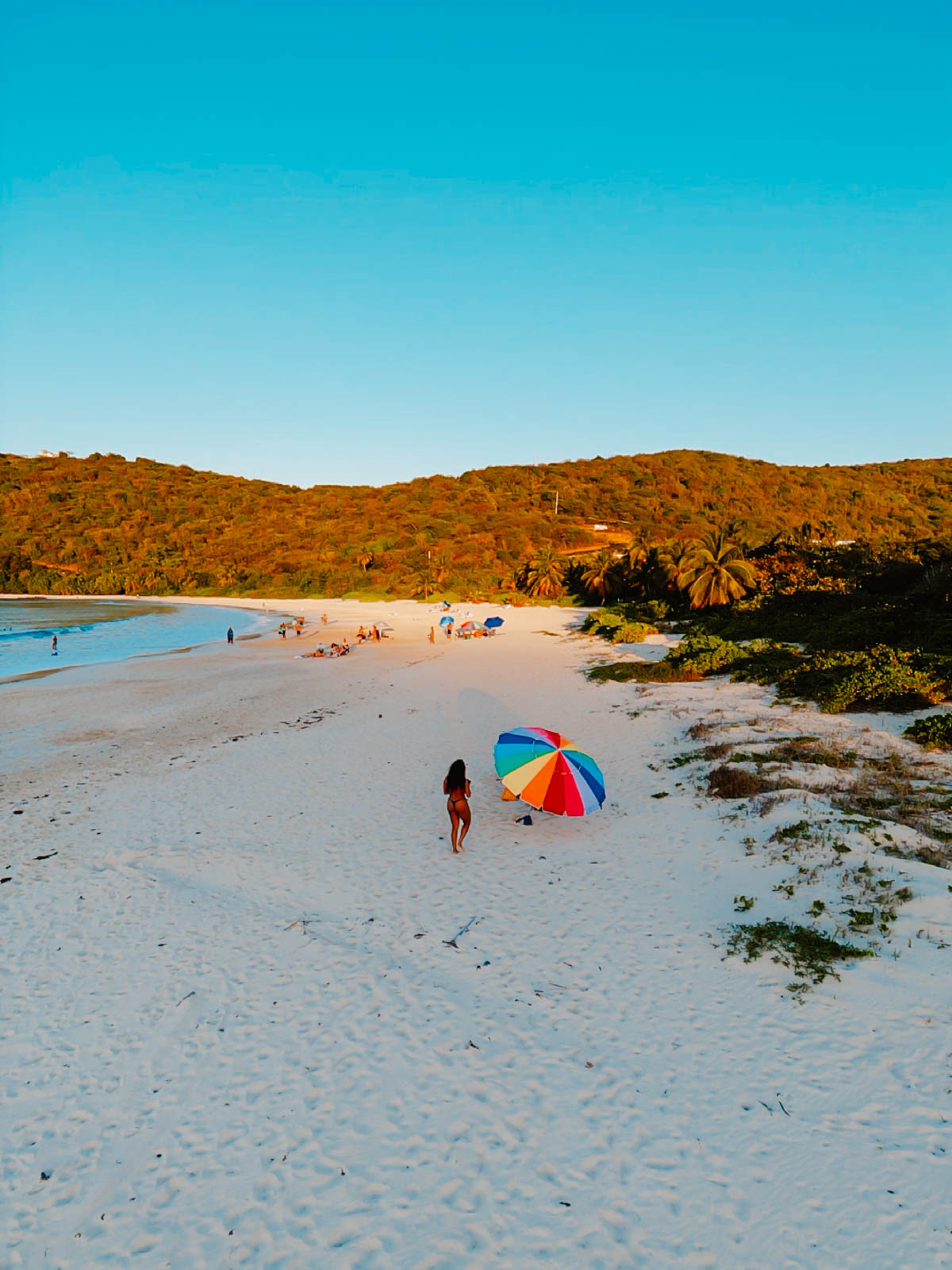
Playa Flamenco
After dropping off our bags and grabbing lunch, we made our way to Playa Flamenco, Culebra’s main attraction, and the kind of place that pretty much every visitor ends up at (usually more than once). It regularly shows up on Tripadvisor’s Top 25 Beaches in the World list, and honestly, I get it.
The beach is wide, soft, and just plain beautiful. The water’s crystal clear, the waves are gentle, and there’s enough space to actually stretch out without brushing shoulders with people. You’ll find food stalls, snorkel rentals, bathrooms, and if you’re lucky, a bit of shade. We snorkeled, wandered, and grabbed empanadas before heading back.
There are also a few quirky details that make Flamenco feel uniquely Flamenco, like the rusted-out military tanks sitting right on the sand, now covered in layers of graffiti. It’s strange, a little haunting, and weirdly photogenic. You’ll also spot beach cats lounging in the shade like they own the place. They kind of do. Feeding them is not allowed but some of them are in such poor shape, we couldn’t help ourselves.
It’s not overrated. It’s just good. The kind of beach that delivers exactly what you hope for when you’re on a tiny island with nowhere to be.
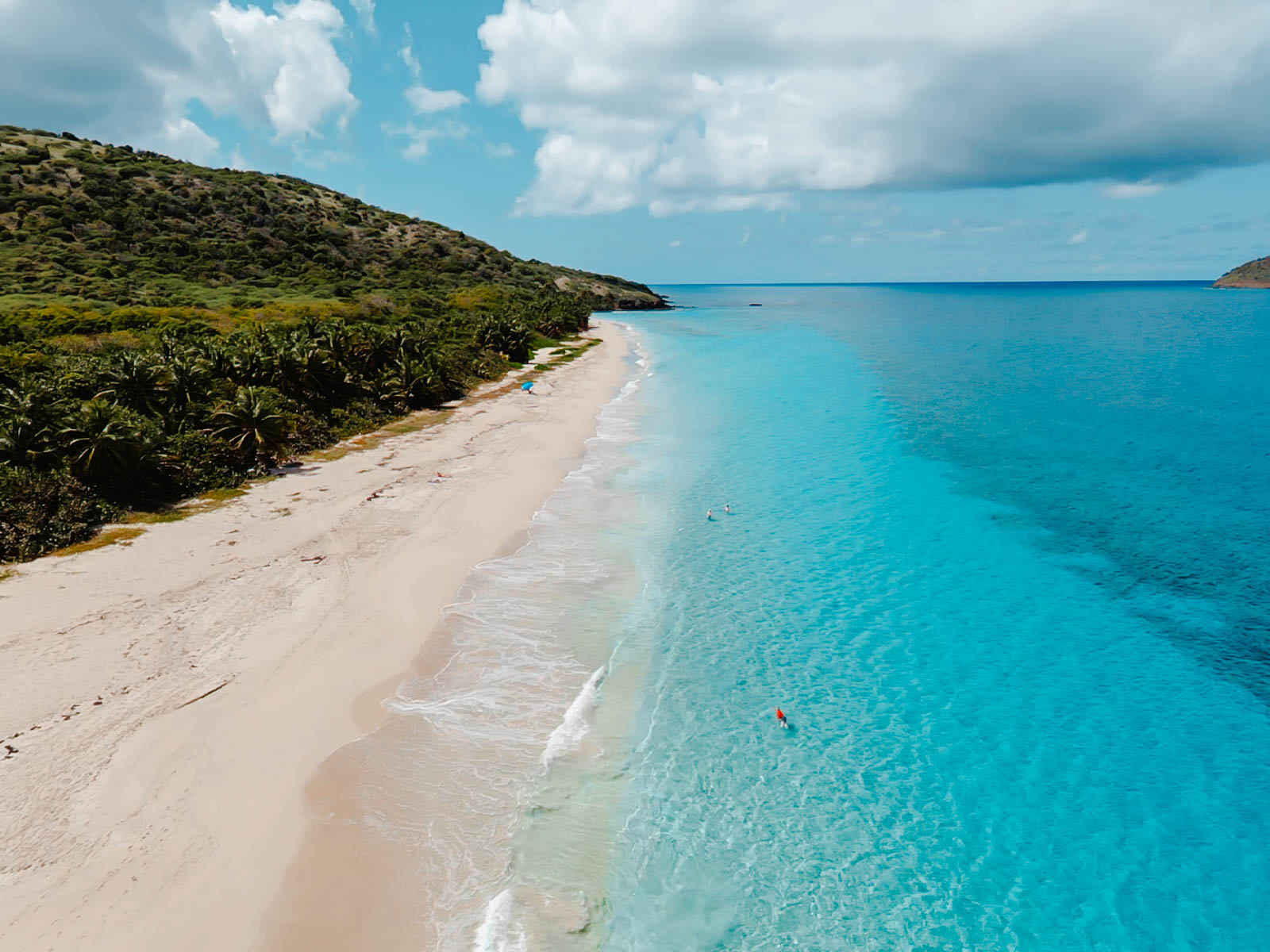
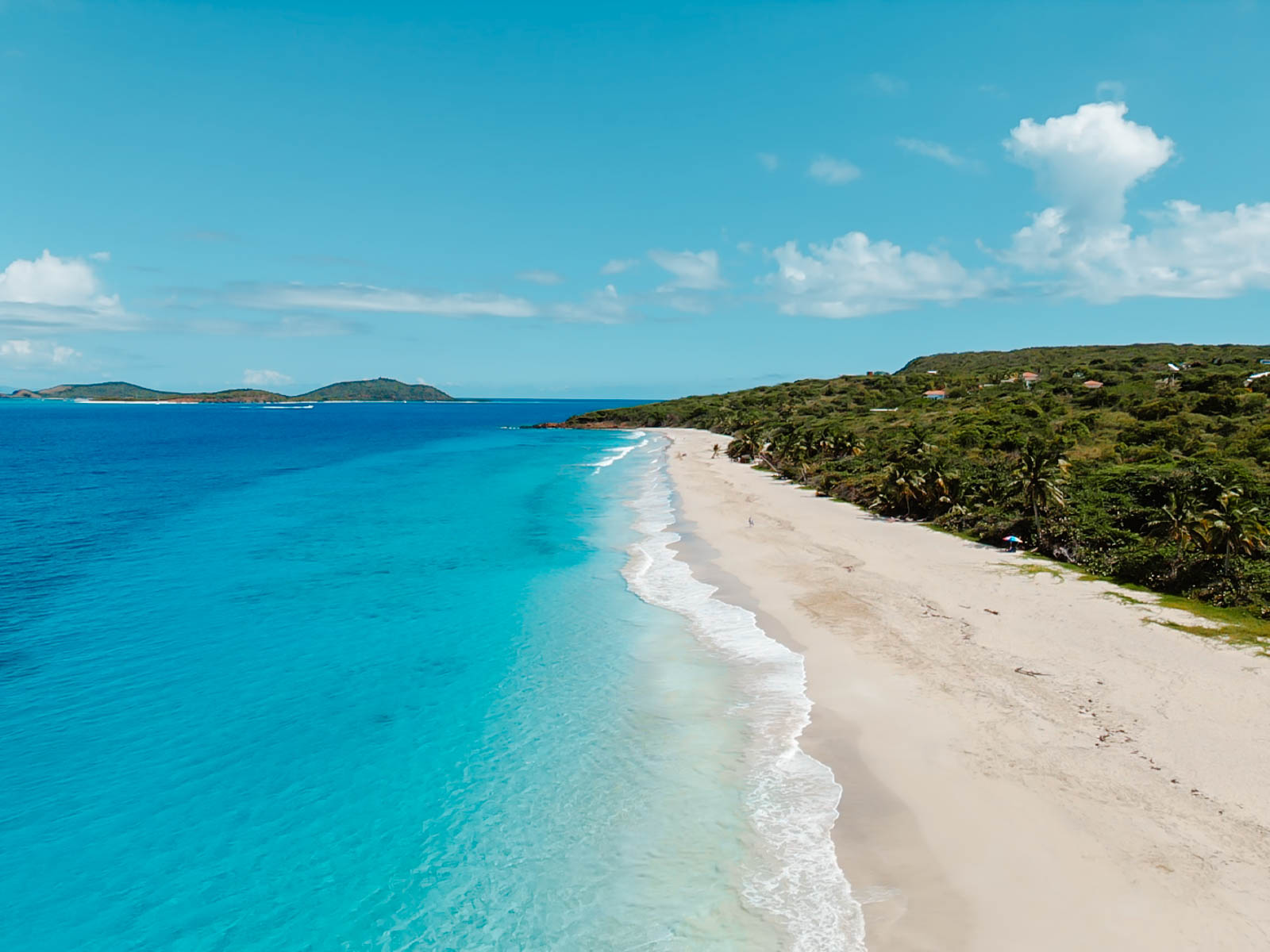
Day 2: Zoni Beach
If Flamenco is the popular favorite, Zoni Beach is the under-the-radar escape. No crowds, no food stalls, no bathrooms, just a long stretch of sand, steady surf, and enough quiet to make you forget what day it is.
We brought our own chairs, snacks, and umbrellas, which is a must since there’s nothing for rent and zero shade unless you’re lucky with the trees. The water was calm, the beach was nearly empty, and for a couple hours, it felt like we had our own private coastline.
Zoni is for people who want to unplug, read a book, float around, and not hear a single Bluetooth speaker nearby.





Day 3: Culebrita
Culebrita, the small, uninhabited sister island of Culebra, is just off its eastern coast. To reach this gem, you’ll need to charter a boat taxi. We used Gammys Water Tours and spent an unforgettable 5 hours on the island. They supplied us with fins, snorkels, beach chairs, umbrellas, and even a paddle board. While you’ll need to bring your own food and snacks, they generously provide water.
On Culebrita there are three main things to do:
- Hike to the tidepools
- Hike to the lighthouse
- Hike to the other beach (trash beach, unlike its name suggests, it was pristine!)
- Snorkel or freedive the reef
- Spot wildlife (we saw a nurse shark!!)
Day 4: Vieques
There are three ways to get from Culebra to Vieques, and none of them are especially straightforward.
Option one: take the ferry back to Ceiba, then catch a second ferry to Vieques. There is technically a direct ferry between the two islands, but it only runs one weekend a month—hardly reliable.
Option two: fly with Vieques Airlink, the only airline offering direct flights. The catch? They only fly on Saturdays and Sundays.
Option three: book a private charter flight directly from Culebra. There’s a small counter at the island’s airport, and daily service is available. It’s not cheap—$385 for the flight—but we went with this option and loved it. After how fun the first plane ride was, it felt like the right move.





Where to stay in Vieques
We stayed at Lejos Eco Retreat, drawn in by its stunning grounds and off-the-grid charm, we’re always up for a unique stay! Located on the northwestern side of Vieques, the retreat is run by a lovely couple, Patricia and her husband, whose care and personality are woven into every part of the experience.
On clear days, you can see all the way to the San Juan mainland and even catch glimpses of the US Virgin Islands. The property is scattered with granite boulders, shaded by mango trees, and features an infinity pool that looks out over the hillside. Their cats wander freely, and the occasional wild horse drifts past the perimeter. Breakfast is included and mostly sourced from their own garden—fresh, simple, and just what you need to start the day!
Where to eat in Vieques
There are a lot more restaurant options in Vieques but these were our favorite.
- Bilis: I recommend their empanadas, paella, plantains & virgin pina colada.
- Rancho Cholis: Whole grilled fish, chicken, beans & rice.
- El Yate: Garlic shrimp, plantains, beans & rice.





Day 5: Playa Negra
Black sand beach also known as Playa Negra is one of the many highlights of Vieques Island. Its black sand comes from volcanic material washed down from surrounding hilltops over millions of years, even though there are no volcanoes on Vieques.
Your GPS should take you to the trailhead, and it’s about an 8-minute walk from there to the beach. Once you arrive, head right to find the densest black sand. The beach is swimmable, but there are no lifeguards, so be sure to check the conditions before taking a dip.
Swimming here is absolutely breathtaking; the mix of golden and black sand with the ocean makes it feel like you’re swimming in liquid gold. The shimmer is so mesmerizing that you won’t want to get out. The black sand is also magnetic, so you might find your iPhone clinging to it. There is no shade or commercial activity at this beach, so make sure to rent umbrellas beforehand. You can find rental stalls all over the island.
Bioluminescent Bay
Later that night, we visited Bioluminescent Bay (Mosquito Bay), which holds the title of the most bioluminescent bay in the world. We booked our kayak tour through Viator, but there are several local companies that offer similar excursions.
Paddling out into the bay under a blanket of stars while the water glowed with every movement was like stepping into a dream. Swimming or submerging your body in the water is strictly prohibited to protect the fragile microorganisms that cause the glow. Still, it didn’t take away from the experience, watching the water sparkle with each stroke of our paddles was otherworldly. One of those rare, quiet moments where everything just feels a little more alive.





Day 6: Playa Sun Bay
Sun Bay is another stunning, seemingly endless horseshoe-shaped bay, and it even comes with wild horses! There’s usually an entrance fee, but during our visit, we drove in without being stopped. We spent a few hours soaking in the scenery, swimming, and lounging. Be sure to bring your own beach supplies, as shade is limited and there are no food vendors.
Sunset Horseback Riding – Jurutungo Farm
Later that day, we booked a sunset ride with Jurutungo Farm. The trail included a stretch along the beach just as the sun was going down. It wasn’t a fast-paced or technical ride—just slow, quiet, and scenic, which matched the mood perfectly.







Day 7: San Juan
We decided to take the ferry back to Ceiba, mostly just to experience it once. Honestly, it was uneventful. I fell asleep. Book your ticket a day or two in advance if you can. I got one same-day, but I wouldn’t risk it again.
Where to stay in San Juan
In San Juan, we stayed at Don Rafa Boutique Hotel & Residences. We weren’t looking for a resort experience, and this place fit the bill. It’s tucked in a walkable neighborhood with more cafes and restaurants than we expected.
I didn’t go in with high expectations, but it ended up being one of those “oh, this is actually great” moments.
Where to eat in San Juan
There are so many food options in San Juan we couldn’t possibly try them all but these were fairly decent:
- Canvas (Inside Don Rafa Hotel): Grouper ceviche, beef egg roll, lamb chops, duck fried rice, chocolate cake and vanilla icecream.
- Cielos: French toast, eggs, potatoes and bacon plate.
- Dosis Cafe: Pancakes and eggs
- Cafe el Punto: Ceviche, empanadas, empanadas with rice and beans, guacamole.
- Annies Gelato: Cookies and cream, coffee.




Day 8: El Yunque National Forest & Luquillo Beach
They say no trip to Puerto Rico is complete without visiting El Yunque National Forest. We set out from San Juan, only to discover that the roads past the park gates were closed. The alternate route they suggested would have added 2 more hours to our journey, so we opted to explore the surrounding areas instead. Despite this detour, I still highly recommend the National Forest. The drive up was stunning, and it was a real bummer we couldn’t complete the hike we’d planned.
Turning to Google Maps for nearby points of interest, I ended up venturing a bit too far off the beaten path. But embracing my love for unexpected adventures, I was ALL in. We found a hidden spot to swim and explore for about an hour before heading to the beautiful Luquillo Beach.
Luquillo Beach
If you’re looking for water sports, Luquillo Beach is the place to be. You can zoom around on jet skis, try flyboarding, and even ride horses. Just a heads up about parking, be careful where you park. We thought we found a safe spot but ended up with a $250 parking ticket.
Compared to the laid-back beaches on Culebra, Luquillo Beach feels chaotic. It’s crowded, commercialized, and more spring break than serene, which is great if you’re into jet skis and loud music, not so much if you’re looking to relax.









Day 9: Old San Juan, Castillo San Cristobal & Castillo San Felipe Del Moro
Exploring a town on foot is hands down the best way to experience it, and spending 6-8 hours here is perfect.
Castillo San Cristóbal, a historic fortress in San Juan, Puerto Rico, was built by the Spanish in the 18th century to guard against land-based attacks. It’s part of the San Juan National Historic Site, which also includes Castillo San Felipe del Morro. As the largest fortification built by the Spanish in the “New World,” it spans 27 acres and features interconnected tunnels, moat systems, and fortified walls.
We explored the tunnels, barracks, and other structures, learning about the fort’s crucial role in Puerto Rico’s colonial history and its strategic importance in the Caribbean. The panoramic views of San Juan and the Atlantic Ocean are absolutely stunning!
Pro tip: a tennis skirt and strong winds don’t mix. I found out the hard way. Don’t be like me.
Day 10: Brunch & Travel
There are absolutely no decent restaurants at the airport, so if you’ve got enough time be sure to get a hearty breakfast in before your trip back home.
Puerto Rico surprised me. It felt honest and unfussy, full of color and contrasts. Ten days was just enough to fall in love but not enough to say goodbye for good.
Related
Leave a Reply Cancel reply
You must be logged in to post a comment.
Before you go, be sure to subscribe so you don't miss out on the latest blog posts, opportunity to travel with me and more!
Explore With Me
Thank you!
You have successfully joined our subscriber list.
design by oregon lane
privacy policy
all rights reserved